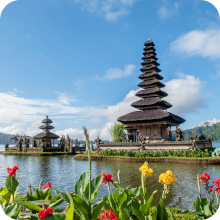Power Plugs in Indonesia: Are They the Same as Europe?
Traveling internationally comes with its fair share of challenges, and one of the often overlooked yet crucial aspects is power plug compatibility. Whether you're jetting off to Indonesia or embarking on a European adventure, knowing if your devices will plug in and power up is essential. So, let’s dive into the nitty-gritty of power plugs in Indonesia and Europe.
Table of Contents
Understanding Power Plugs and Sockets
Power plugs and sockets vary significantly across the globe. Each type is designed to meet the electrical standards and safety requirements of its region. Let's break down the basics:
Types of Power Plugs and Sockets
Globally, there are about 15 types of power plugs, categorized from Type A to Type O. In Europe, the most common are Type C (Europlug), Type F (Schuko), and Type G (UK plug). In Indonesia, you’ll primarily find Type C and Type F plugs.
Voltage and Frequency Considerations
Voltage and frequency are critical when it comes to powering your devices safely. Europe and Indonesia both operate on a standard voltage of 230V and a frequency of 50Hz. However, always check your device specifications to ensure compatibility.
Power Plugs in Europe
Europe is a diverse continent with a relatively standardized approach to power plugs and voltage. Here’s what you need to know:
Common Plug Types in Europe
Most European countries use Type C and Type F plugs. Type C, also known as the Europlug, is a two-pin plug commonly used across the continent. Type F, or Schuko, is a two-pin plug with grounding clips on the side, prevalent in countries like Germany, Austria, and Spain.
Voltage and Frequency in Europe
The standard voltage in Europe is 230V, and the frequency is 50Hz. This uniformity means that if your device is compatible with these specifications, you’re good to go almost anywhere in Europe.
Power Plugs in Indonesia
Indonesia follows similar electrical standards to many European countries, making it relatively easy for travelers from Europe to adapt. Here’s the lowdown:
Common Plug Types in Indonesia
In Indonesia, you will encounter Type C and Type F plugs, identical to those used in many parts of Europe. This similarity means European travelers often do not need an adapter when visiting Indonesia.
Voltage and Frequency in Indonesia
Indonesia operates on a standard voltage of 230V and a frequency of 50Hz, the same as Europe. This makes it convenient for European travelers to use their devices without worrying about voltage incompatibility.
Thanks for visiting our blog, are you planing to travel to Europe? Check out our SIM card Europe and our eSIM for Europe before you take off.

Comparison: Indonesia vs. Europe
While Indonesia and Europe share many similarities in their power plug standards, there are still some nuances to consider.
Similarities and Differences
Both regions use Type C and Type F plugs and operate on 230V/50Hz. However, some European countries, like the UK, use Type G plugs, which are not compatible with Indonesian sockets without an adapter.
Compatibility Issues
Generally, European devices work seamlessly in Indonesia and vice versa. However, it’s always wise to double-check the plug type and voltage specifications of your devices to avoid any mishaps, especially with older or specialized equipment.
Adapters and Converters
Even with similar standards, there might be instances where you need adapters or converters. Here’s when and why:
When You Need an Adapter
If you’re traveling from the UK or any other country that uses Type G plugs, you’ll need an adapter to fit into Type C or Type F sockets. Adapters are inexpensive and widely available online or at travel stores.
When You Need a Converter
If your device does not support 230V, you’ll need a voltage converter. This is particularly relevant for high-powered devices like hair dryers or some electric razors. Always check your device's voltage rating before plugging it in.
Tips for Travelers
Preparation is key when it comes to managing your electrical needs abroad. Here are some tips to keep your devices powered up and safe:
Preparing for Your Trip
Make a checklist of all the devices you plan to bring and check their voltage compatibility. Purchase any necessary adapters or converters ahead of time to avoid last-minute scrambles at the airport or your destination.
Where to Buy Adapters and Converters
You can find travel adapters and converters at electronics stores, travel shops, and online retailers like Amazon. Look for reputable brands to ensure safety and reliability.
Before you take off, make sure to check with the local government.
Traveling between Indonesia and Europe is relatively straightforward in terms of power plug compatibility. Both regions use similar plug types and the same voltage and frequency standards. However, always double-check your devices' specifications and be prepared with the right adapters or converters. With a little planning, you can ensure your devices stay charged and functional throughout your travels.
FAQs
Do I need a power adapter when traveling from Europe to Indonesia?
Generally, no, if you are using devices with Type C or Type F plugs. However, always check your specific device compatibility.
Can I use my European hair dryer in Indonesia?
Yes, if it supports 230V and 50Hz. If not, you may need a voltage converter.
Are the power sockets in Indonesia the same as in Europe?
Yes, Indonesia uses Type C and Type F sockets, similar to many European countries.
Where can I buy a travel adapter for Indonesia?
Travel adapters can be purchased online, at electronics stores, or at airports.
What should I do if my device isn't compatible with Indonesian voltage?
You will need a voltage converter to use devices that don't support 230V.















